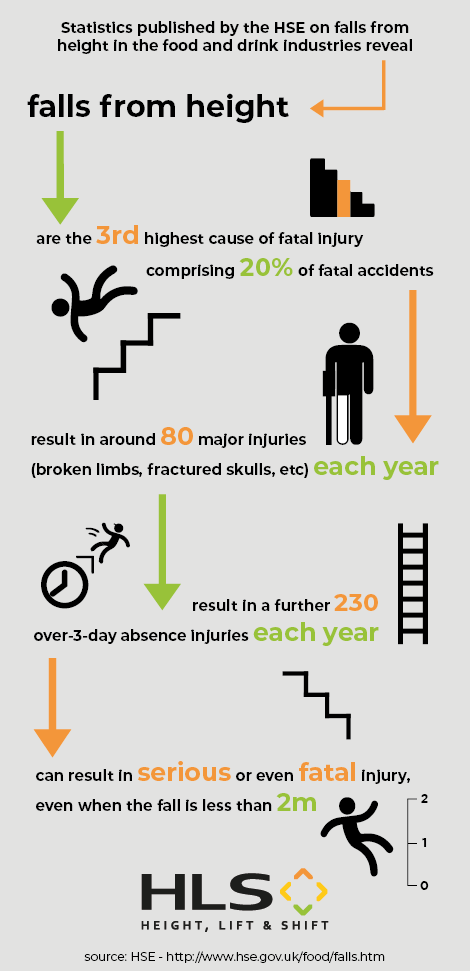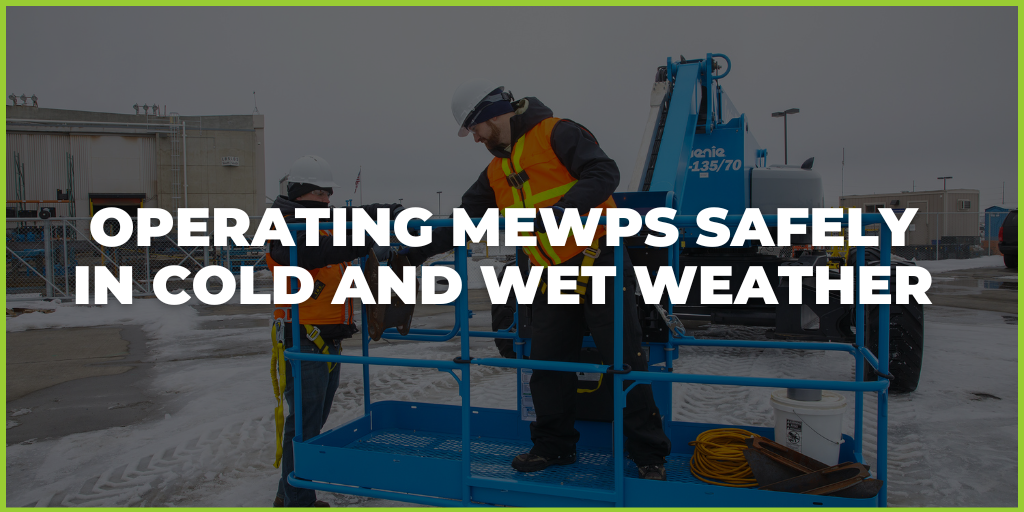Falls From Height Within The Food and Drink Manufacturing Industry
Companies operating the UK in the food processing industry work at height on a near daily basis: clearing blockages, inspecting and repairing equipment and high-level cleaning, etc.
However, the pressure is always on to uphold productivity, which means work at height, may sometimes be carried out in a non-compliant way that might directly put your staff as well as your products at risk. When businesses try to take shortcuts in a bid to maintain daily production, accidents tend to happen – in fact, ladders and step ladders alone are responsible for at least 40% of work at height accidents in the food industry.
Falls from height in the food and drink industry
Statistics published by the HSE on falls from height in the food and drink industries reveal they:
- are the third highest cause of fatal injury, comprising 20% of fatal accidents
- result in around 80 major injuries (broken limbs, fractured skulls, etc) each year
- result in a further 230 over-3-day absence injuries each year (this statistic is taken from the HSE data above, but is often reported to be 7 -10 days of work)
- result in serious or even fatal injury even when the fall is less than 2m

Places from where falls occur and activities being undertaken
In the food and drink industries, analysis of 150 falls from height accidents investigated by HSE over three years indicated the following places from which workers fell:

- Ladders: 40%
- Vehicles/FLTs (see below): 17%
- Machinery/plant: 10%
- Platforms: 10%
- Stairs (see below): 8%
- Roof/false ceiling: 7%
- Scaffold/gantry: 4%
- Warehouse racking: 4%
Where workers fell from vehicles, 35% fell from the back of a lorry, 31% fell from FLT forks, 13% from cab steps, 9% from the top of a vehicle and 4% from tanker steps.
Falls on stairs are more frequent than that indicated in the investigated sample above. One-third of over-3-day absence injuries caused by falling in the food and drink industries occur on stairs.
The activity being carried out when a person fell depended on the place from which they fell. For example, falls from scaffolds, roofs and ladders were usually associated with maintenance. Where the fall was from machinery or plant cleaning, checking and sampling were the main activities being undertaken.
Source HSE: http://www.hse.gov.uk/food/falls.htm
Why are the figures so high?
Often people resort to quick and easy work-at-height solutions, putting themselves at risk in the process. The use of ladders accounts for 40% of all work at height accidents in the food industry, followed by falls from vehicles (17%), many due to forklift truck operators standing on the forks themselves or creating make-shift platforms by attaching pallets to forks.
Safe work at height in the food & drink industry
We have extensive experience and technical expertise, providing bespoke advice, equipment and training to the food and drink industry. We fully understand the needs and demands of the sector and offer an entire range of work-at-height platforms and bespoke solutions.
We’re Trusted Partners
As an independent business, we’re experts in the working at height space. Regardless of your business activities, we can advise and provide the correct height solution for you. As such, we’re trusted by some of the largest organisations in the UK and have been awarded numerous accolades:
• ISO 9001 Commendations
We’ve achieved 4 awards for best practice and superior quality standards in leadership,
communication and management review, as well as supplier management
• FTSE 100 Companies
16% of our clients are FTSE 100 companies representing the largest players in their field
• 6 Food & Drink Giants
Working with global food and drink manufacturers, our exposure to the F&B sector is expansive
• 65% From Referrals
We generate most of our new business from word of mouth
• 5 Facility Management Groups
We support major brands like CBRE, ISS, JLL and Engie with their working at height needs
• 99% Contract Retention
We’re proud to retain nearly all of our inspection, maintenance and service clients





